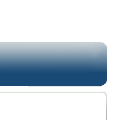ISAS BioImage Suite InstructionsThis site provides step by step instructions on implementing ISAS with BioImage Suite. We will discuss:
To begin with, please ensure that you have BioImage Suite 2.61 or later installed. The ISAS instructions are written for a user that is familiar with BioImage Suite basics but if you are a novice you may want to refer to the official BioImage Suite manual (which contains introductory texts). Most people learn how to use BioImage Suite from a friend. If you're starting from scratch, then it might be worth using the BioImage Suite forum to contact fellow BioImage Suite users. We have also included example ictal and interictal SPECT scans from a patient, (Patient #2 from McNally et al., 2005 ). Results of the analysis for this patient can be found on our Sample Analysis page. We recommend that new users check their methods by running a full ISAS analysis on the SPECT scans from this patient, and then compare their results to the provided sample analysis hyper- and hypoperfusion results. We chose not to fully automate the analysis and thus we do not provide batched image registration and image processing This allows for greater flexibility and encourages active interaction with the data which enables added checks for errors and artifacts at each processing step. One of the greatest dangers of automated processing is that added abstraction hides too many of the details and allows users to treat the analysis tool as a black-box, thus sacrificing understanding for convenience. Because ISAS involves nonlinear registration of SPECT images to a standard template, it is essential to check results for possible artifacts. In addition to visually inspecting the results at each stage of analysis, we recommend that analysis also be done using a second method. This "double check" analysis can also be preformed in BioImage Suite using the "Subtraction Processing" method. Although Subtraction Processing does not allow objective statistical interpretation of the results (because results are not compared to a normal database), it does enable a quick visual read of difference analysis without nonlinear warping, smoothing, or cropping. Therefore, we also describe SPECT difference analysis using Subtraction Processing with BioImage Suite. Finally, because postictal SPECT scans cannot reliably localize the lobe of seizure onset, but can lateralize the correct hemisphere based on which side has more hypoperfusion ( McNally et al., 2005 ), we describe calculation of the hypoperfusion asymmetry index for this purpose. |
|



